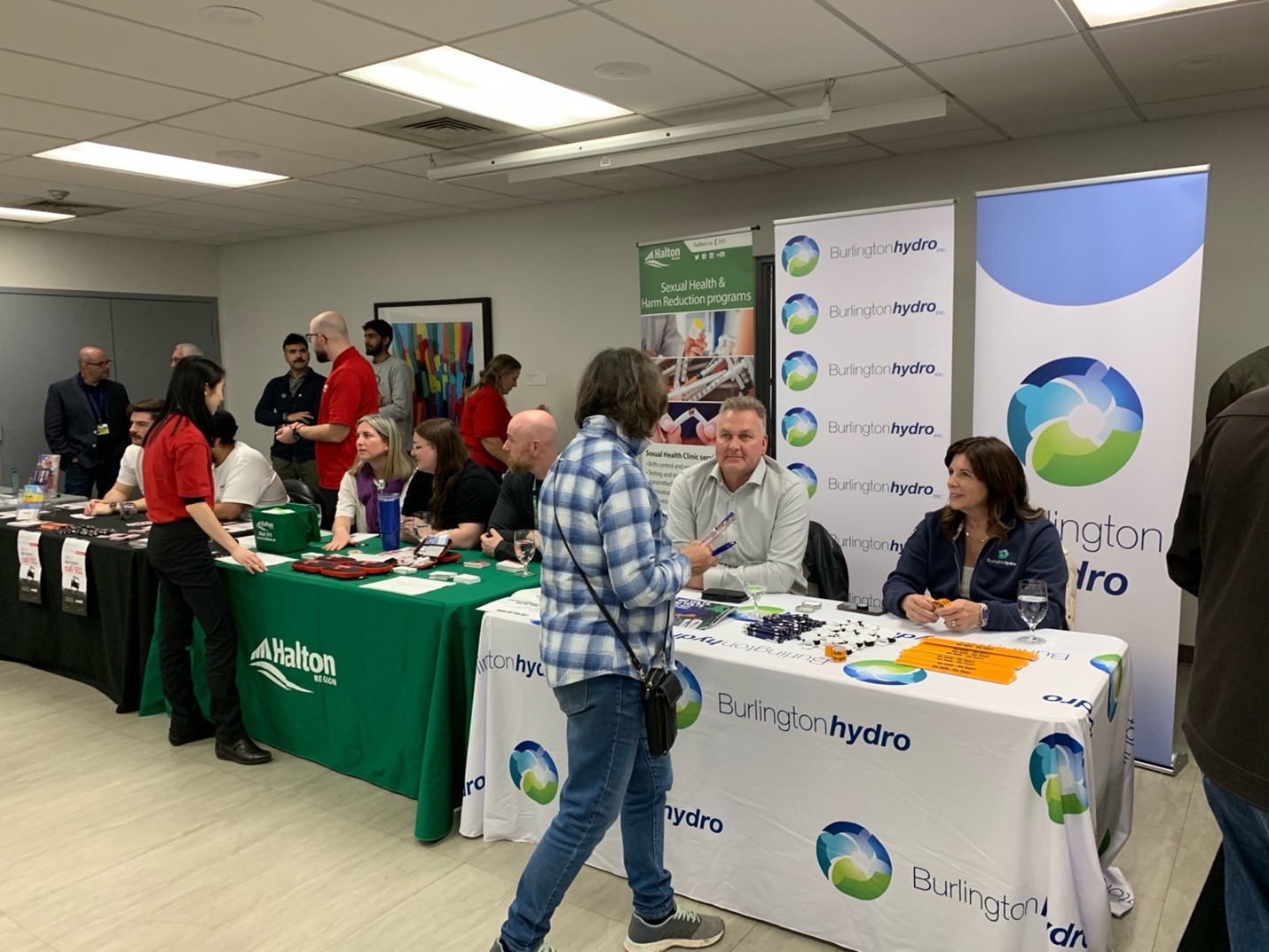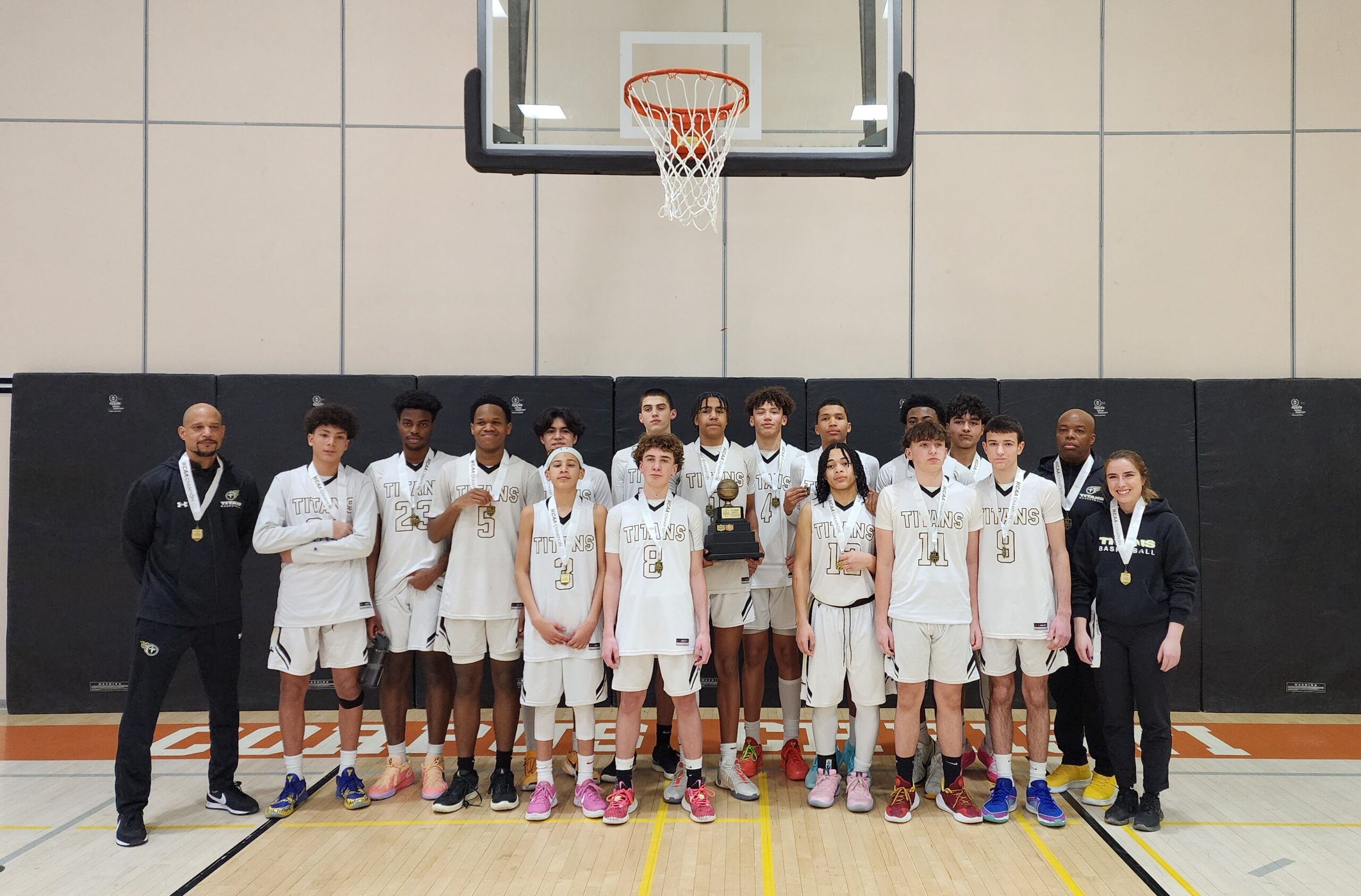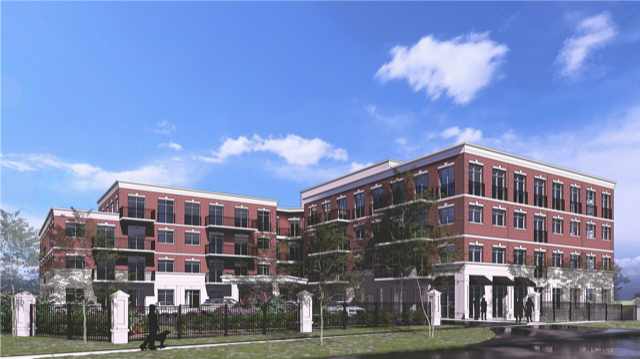By Jack Brittle, Local Journalism Initiative Reporter
A Community Safety Forum was hosted by Ward 2 Councillor Lisa Kearns at the Art Gallery of Burlington (AGB) on March 27, so that the community members could hear from safety service providers first-hand and ask questions.
The event was held in the Shoreline and Rotary Room of the AGB from 7 to 9 p.m. and included presentations from many of Burlington and Halton’s services and departments, including Halton Regional Police Service (HRPS), Burlington Fire Department and Halton Region Paramedic Services.
Various stations were also set up around the perimeter of the hall that guests could visit before the formal event started as well as at the conclusion of it. Halton Region had a table, as well as the constituency office of Burlington MP Karina Gould, Burlington Hydro, Crime Stoppers, and the YMCA.
Kearns kicked off the event by addressing the crowd and talking about the importance of community safety.
“Safety is a word that resonates with each of us,” Kearns said. “It’s a basic human need that forms the bedrock of a thriving community, and today we will address the pressing matters of safety within our beloved city, through insightful dialogues and much-needed exchange of information.”
Kearns said the forum was organized in response to inquiries from constituents to touch on the safety of “our person, our property, our neighbours, our businesses, our well-being and our compassion, and our passion for the vulnerable,” as well as “transit safety, victim care, and prevention efforts.”
She described the format of the forum as “a reflective panel discussion followed by a proactive community question-and-answer session.”
Kearns spoke about the impact that the exchange of information can have on a community.
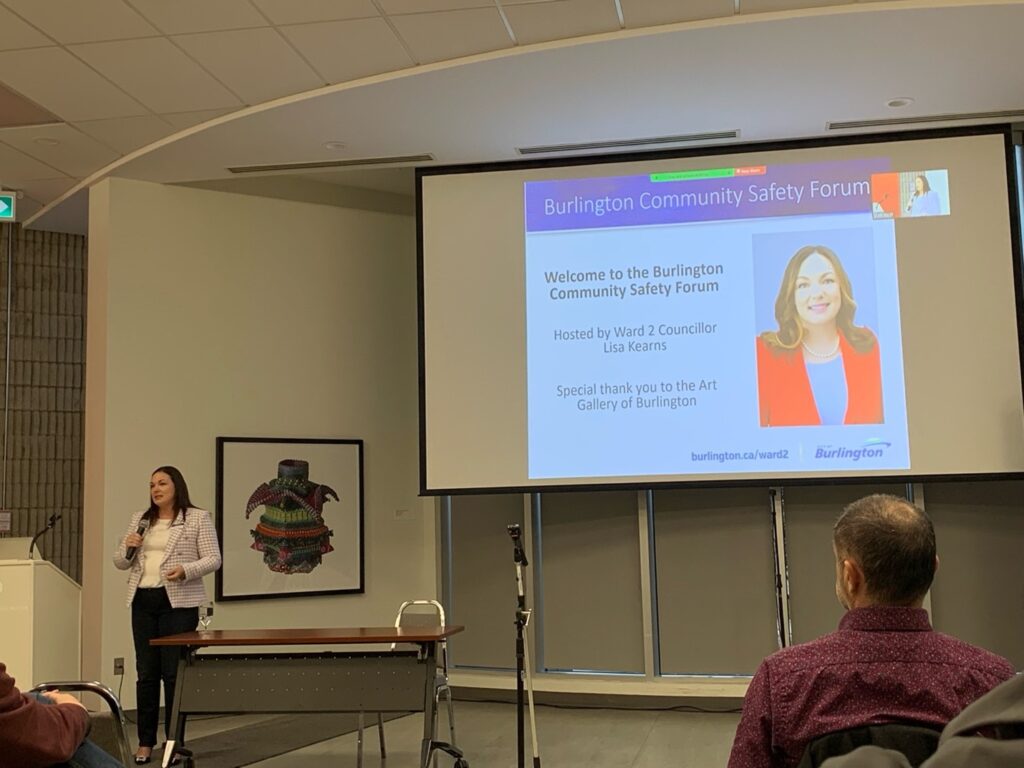
“Information is a formidable tool, and when armed with it, every citizen is transformed into a change agent and supporter of safety in all forms,” she said.
Kearns then introduced the first presenters, Staff Sergeant Chris Clarke and Inspector Raf Skwarka of 3 District Burlington (30 Division), who were there on behalf of HRPS.
Skwarka spoke briefly about crime trends in the region overall.
“Overall crime is down,” Skwarka said. “If you compare ourselves to 2023–2022, crime is down. With the exception of a couple of sectors, those being auto-theft and break-and-enters.”
Auto theft has doubled from 2021–2023 and is projected to go up another 15%.
Skwarka said that the crimes are mostly spread out across the whole community, but downtown and the northeast end of Burlington are hotspots.
He said the vehicles most often stolen are Toyotas, bigger SUVs, pickup trucks, GMCs, Chevy Tahoes and Escalades, Dodge Rams and F-150s.
Skwarka recommends parking your car in a garage if possible and never leaving valuables in a vehicle.
According to Skwarka, Halton Regional Police responded to 1500 mental health or person-in-crisis calls in 2023, which is approximately four calls per day.
Clarke said that homelessness is “probably the biggest problem in the region” and that the count of people experiencing homelessness in Burlington is higher than it is in Oakville and Milton.
He spoke about the work that Halton Police has done to try and help the unhoused.
“We go out and do encampment checks almost every day,” Clarke said. “On Thursday specifically, we go to the GO station, which has become a de facto shelter. And we brought community partners to the table and some of the homeless people have been given shelter, some of the homeless people have got houses [now], but there are a hard core of people who don’t want any help, they just want to do what they want to do.”
“We’ve offered them all the kinds of services we can, and help,” Clarke said. “Just this quarter we’ve had about 88 homeless outreach offers, and 68 were declined. So, we’re trying our best.”
Clarke also deals with the traffic unit and says that noisy mufflers have been a major complaint among residents.
Clarke said they wrote 546 tickets last year for noisy mufflers, 154 tickets for stunt driving, and 316 for distracted driving.
He also spoke about some of the adjustments that are being made to the transit centres for the purpose of safety.
“We’ve done a lot of work with Metrolinx, to try and make the GO station safer,” Clarke said. “Those of you who do commute to GO station[s] will see that there are times where you probably don’t feel that safe. Well, from April the 1st, Metrolinx is actually going to be locking the stations. So this will discourage people from loitering around there.”
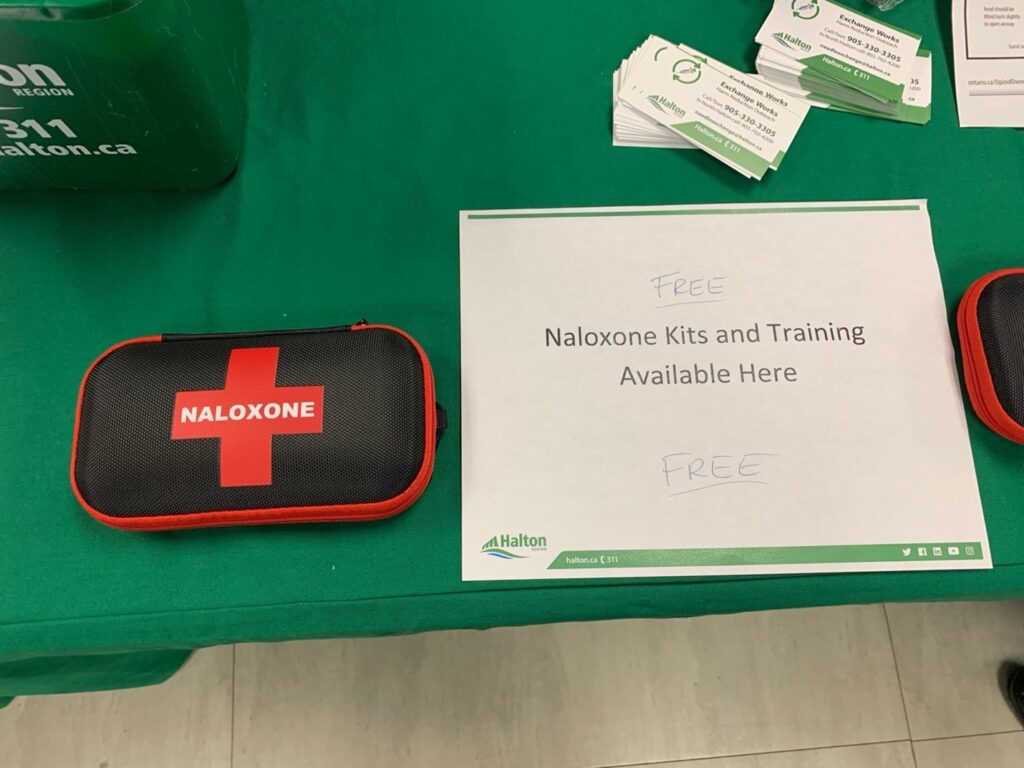
Clarke said that “station safety ambassadors” will be on site from midnight to 6 p.m. to unlock the doors for people who need to access the parking lot.
He said that HRPS had 299 calls for service there last year and about 100 calls for service so far this year, which have led to 60 arrests.
Clarke said that HRPS’ approach to the homeless is two-pronged in nature.
“We go in with outreach,” Clarke said. “We try to get people help, try to get the help they need, and then the people who commit crime are arrested.”
Kearns then introduced Karen Roche, fire chief of the Burlington Fire Department (BFD).
Roche spoke about the Alarm Assistance Program that BFD facilitates, designed to help citizens install smoke alarms.
The program was initially only open to senior citizens but is now available to everyone, regardless of age.
“If you’re vulnerable or you’re scrimping to get by, [if] you don’t have money to put a smoke alarm in your house, all you have to do is call that number,” Roche said. “Our guys can come, and they will install one for you for free.”
Kearns then turned the podium over to Dawn-Marie Lebel, the acting superintendent of the community program paramedic services, and Katie MacKenzie, a community paramedic, both from Halton Paramedic Services.
They spoke about the “CP@Clinics” that are run at nine senior housing buildings across the region.
“They’re weekly clinics where a community paramedic will sit one-on-one with a participant,” Lebel said. “They’re welcome to come down at any point during clinic hours. They do health risk assessments, they do some medical monitoring, [checking] blood sugars and blood pressures, and they work to connect you with community partners. for things that might be needed in your homes to keep you safe.”
“After somebody comes to the clinic, their family physician might get a notification of their health and then any sort of medical intervention that’s required can be implemented,” Lebel said.
They also spoke about another program that is designed to help people with chronic obstructive pulmonary disease (COPD) or congestive heart failure (CHF) monitor their condition from their homes.
“This program provides them with a tablet or smartphone, [which] they use with an app that connects them with a multidisciplinary team,” Lebel said. “By connecting our seniors to these teams, we’re able to look at alternative methods and alternative care outside of just the ‘emerge’ department.”
Lebel said that the app enables users to input their vital signs every day and that if there’s something that seems abnormal to you, “a community paramedic will contact you virtually and then maybe escalate that to a home visit to try to render care and prevent hospitalization.”
The last program Lebel touched on was Community Paramedicine for Long-Term Care, which enables paramedics to visit patients at their homes and do cardiac monitoring, check their blood pressure and blood sugar, and do other health risk assessments.

